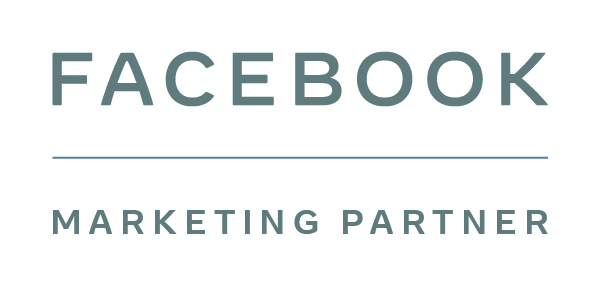So, the snap election has come to its conclusion. Few would have correctly predicted the result when Theresa May made her April 18th announcement. Now that the dust has (almost) settled, what can we learn from the fierce social media war waged between the Conservatives and Labour?
According to crowdtangle (a social monitoring platform owned by Facebook), in the week running up to June 9th, the Conservative party had 438k interactions, while the Labour Party enjoyed more than double the amount. So where did it all go wrong? Join us as we review the Tories’ social media campaign and find out what exactly what, from a social perspective, could (and should) have been avoided.
1. Understand your target audience
According to data by Who Targets Me – a fascinating tool, where you can find out which political parties are spending money to target you – The Conservative Party were targeting new audiences first and foremost.
Within this new audience, May and her team were primarily trying to reach swing voters – somebody whose vote could be decisive. The goal was to find margin constituencies and tip the scales in their advantage. And while this could have worked, the message they used didn’t actually appeal to the swing voters. Instead, it seemed to appeal the traditional Tory voters, and did so in quite a drab and un-energetic manner. They preached to the converted, and it wasn’t an energising sermon.
Talking to staff at Dunelm in Nottingham about Brexit and the opportunities it can bring. I’ll get a Brexit deal to help businesses grow. pic.twitter.com/8tbq2OwZ9w
— Theresa May (@theresa_may) June 7, 2017
What have we learnt? Determine who your target audience is. If you don’t understand them, how best to reach them and what will trigger their attention, you will struggle.
2. Optimise. Repeat
Global agency, We Are Social, analysed the follower growth for both parties, and the results are telling. In the six weeks after the election was called, the Labour Party enjoyed a 61% follower increase, while the Conservatives managed a mere 6% (on Twitter, Facebook and Instagram).
The numbers clearly demonstrate that the Conservative Party was missing the target. So why didn’t they change tact? “The Conservatives and Theresa May really missed a trick over the past six weeks,” said Andre van Loon, the Research & Insight Director at We Are Social. “They would have seen the data as it came through and yet they didn’t change anything. They could have tried to be more appealing to young people from the start.”
What have we learnt? For any social media campaign, big and small, it’s important to constantly evaluate the results and optimise accordingly. If things are going wrong, you need to know about it. And you’ll need to put things right. Even if everything is going well, there is always room for improvement, and the circumstances might change too, so don’t rest on your laurels. Evaluate. Optimise. Repeat.
The consequence of a misfiring social media advertising campaign can be costly too. Facebook’s algorithm rewards ads that demonstrate their relevance, which is measured by the engagement levels. As a result, the Labour Party probably got more bang for their buck.
3. Bread & Butter
Labour’s final “get out the vote” advert was pushed in 464 constituencies, while the Tory equivalent was pushed in only 205. As a consequence, the Conservative Party – to some extent – ignored their existing supporters while out chasing new ones. According to Sam Jeffers, co-creator of Who Targets Me, “They were going deep into Labour territory and forgot their own backyard.” For example, there weren’t any adverts in Battersea in the final 48 hours, a “safe” seat they went on to lose.
What have we learnt? If you’ve recently kickstarted a new social media campaign, you’ll know how exciting the process can be. Reaching out and connecting with new people is thrilling, especially if they become a lifelong customer. However, while it’s important to target new audiences, don’t forget your bread and butter customers – the ones who’ve loyally chosen your services and products above the competition for years. What can you offer them? A new resource? A how-to guide? A loyalty bonus?
Take a look at how Liverpool unveiled its new 2017/18 home kit for a spot of inspiration:
4. You can’t cheat social
A lot has been made of the funds used to subsidise the Conservatives’ social media push. And while this guaranteed a certain level of exposure, it doesn’t automatically translate to engagement.
Conversely, Labour created shareable content and simply counted on the quality of its output to attract engagement. Hooking up with a few influencers didn’t hurt either, as Labour proved when they joined up with a number of celebrities. For example, take a look at this video of Corbyn with JME – a grime MC, and co-founder of the crew and label Boy Better Know:
JME alone has a combined following of over 1.1 million on Facebook and Twitter, which is more than May’s 874,000, plus he has direct access into the target audience the Tories craved.
What have we learnt? Yes, you can simply buy a lot of success on social media. You can even buy followers, if you that’s the way you want to go (but please don’t). What you can’t buy is devotion – genuine fans that want to share your message, and are willing to do it organically. Focus on creating and delivering great social content, and the rest will take care of itself.
5. Be Positive
A considerable amount of the Tory’s budget was spent on sharp anti-Jeremy Corbyn paid-for ad attacks across Facebook, YouTube and Snapchat (£1.2 million according to the Metro). A Corbyn-bashing video is now the most-viewed political ad ever in the UK, showing just much weight the Conservative Party put on negative tactics (nine million views and counting)
But where was the joy? The enthusiasm for the future? In contrast, Labour ran a positive campaign that rallied support. According to a study by Buffer, viral images generally have three commonalities – positive feelings (such as joy, interest, anticipation and trust), emotional complexity and the element of surprise. And this is true across all age groups.
What have we learnt? Pushing a consistently negative message is unlikely to deliver a viral response – the Holy Grail for any social media campaign.
6. Hashtag It
On the polling day, Labour purchased the rights for the hashtag #ForTheMany on Twitter for £50k. A snip when you consider the impact of a trending hashtag. #VoteLabour and #JezWeCan were also a hit – both outperforming the Conservative counterpart #VoteTory and #StrongAndStable.
Off to the Polling Station! #ForTheMany ❤️???????? pic.twitter.com/WgYPzqurc5
— ????Ember Chops???? (@ember_chops) June 8, 2017
What have we learnt? If Labour are willing to pay £50k for a hashtag for just one day, perhaps you should take another look at your brand’s hashtag. Do you use it consistently across your marketing material and social media pages? Does it accurately reflect your brand? And does it have the impact you need?
Positivity pays
Whether you’re a Labour or Conservative voter (or neither) we’d appreciate a share from you. Please help us spread the message that positive, authentic and joy-filled social media campaigns perform better and could even cost less.





